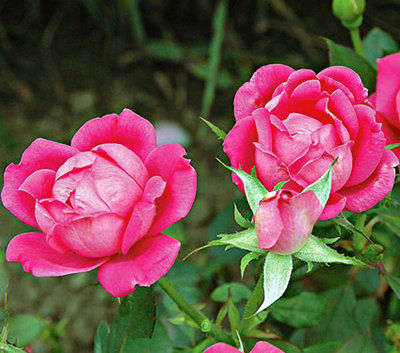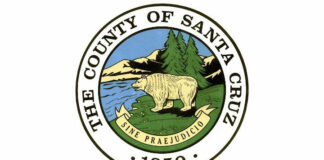
I’m beginning to see the stirrings of life on some plants, and although I’ve enjoyed some down time after the holidays, there are several tasks it’s time to do.
If we lived where the snow drifts are 10 feet high, we could procrastinate a while, but here in California, the game is afoot.
My first priority is to prune the roses before they start leafing out, which wastes plant energy.
I want them to produce lots of roses, not just a few exhibition-size blooms, so I prune shrubs moderately. Remember, your goal is to keep the center of the plant open for good air circulation. Aim for a vase-shape bush with an open center by cutting out crossed canes and spindly, weak, broken or diseased stems, as well as deadwood. Cut back the remaining stems by about a third, cutting canes at a 45-degree angle, just above an outward-facing bud.
Don’t worry whether your pruning job is perfect. Roses are super forgiving, and you can trim them up again later.
I once helped prune the rose garden at the historical Gamble Gardens in Palo Alto. To revitalize the old shrubs, we sawed out most of the beefy canes. I didn’t think they could recover in time for the big May bloom, but they did and were spectacular. Roses are like redwoods — you can’t kill one. They’re the Energizer bunnies of the plant world.
Climbing roses require little pruning. Cut out extra stems if there are too many, and also cut back long, established canes to about the place where they are slightly thicker than a pencil. Then, cut each side stem down to several inches. This will cause the cane to flower along its complete length for a beautiful spring display.
Remove any leaves that still cling to the bush. Rake up debris beneath the plant and discard it to eliminate overwintering fungus spores.
It’s also a good idea to spray the bare plant and the surrounding soil with a combination of organic horticultural oil to smother overwintering insect eggs and a dormant spray, such as lime-sulfur, to kill fungus spores. If you usually only have problems with black spots, you can use a mixture of 1 teaspoon baking soda with a few drops of light oil in 1 quart water and spray every 7 to 10 days.
Other garden tasks for January
• Cut back hydrangeas, if you haven’t already done so. Apply soil sulfur, aluminum sulfate or another acidifier if you want to encourage blue flowers.
• Prune fruit, nut and shade trees and spray with horticultural oil and lime sulfur or copper dormant spray. Don’t use lime-sulfur on apricots, though.
• Cut back summer-flowering deciduous shrubs and vines. Don’t prune spring-flowering varieties like lilac, flowering cherry, plum and crabapple, rhododendrons, azaleas, camellias, weigela and spirea until after they flower — or you can cut some during flowering to use the cuttings for bouquets.
• Control overgrown honeysuckle, potato vine, morning glory, trumpet creeper and pink jasmine by thinning now or even cutting back low to the ground if they are a big tangled mess.
• Jan Nelson, a California certified nursery professional at Plant Works in Ben Lomond, will answer questions about gardening in the Santa Cruz Mountains. E-mail her at ja******@*ol.com.












